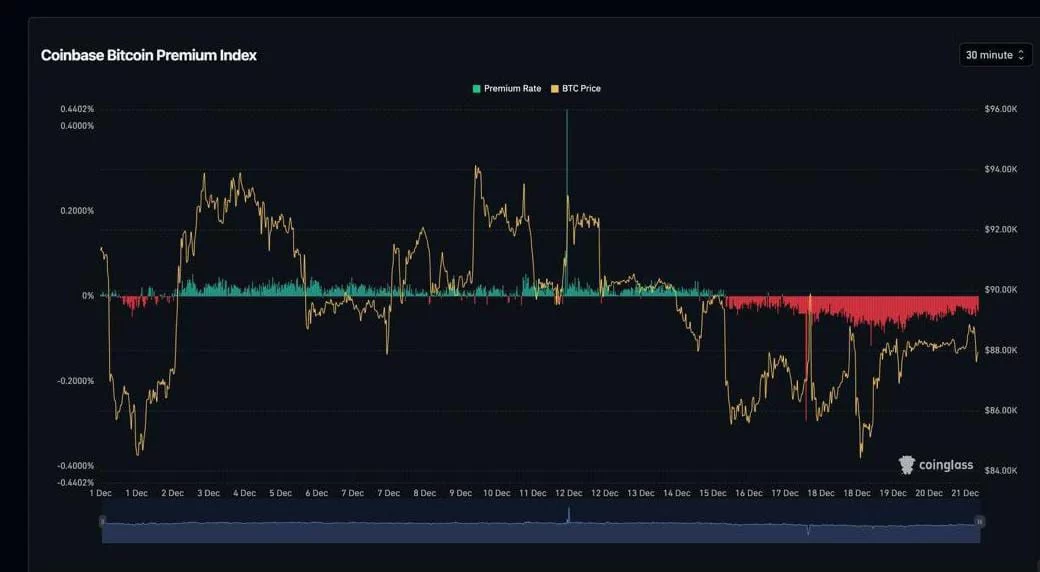News
Stay up to date on the latest crypto trends with our expert, in-depth coverage.


Following Yesterday’s Move, Controversial Figure Arthur Hayes Purchased a Different Altcoin Today
BitcoinSistemi·2025/12/21 19:03

The Next Millionaire Maker? Top Traders Are Choosing GeeFi (GEE) Over Ripple (XRP) as Presale is Skyrocketing
BlockchainReporter·2025/12/21 19:00

US Investors Signal Concerns with Cryptocurrency Trends
Cointurk·2025/12/21 18:51

Top AI Crypto Coins to Buy Now In December 2025: Market Confusion Grows While DeepSnitch AI Surges 92% in Stage 3 Presale
BlockchainReporter·2025/12/21 18:42

If Ozak AI Hits $5 by 2027, Early Buyers at $0.014 Could See Up to 350× Gains — Here’s the Full ROI Breakdown
Cryptodaily·2025/12/21 18:36

XRP Holds $1.83 Support as Price Stays Range-Bound Near $1.87
Cryptonewsland·2025/12/21 18:36

Bitcoin Naar $140K In 6 Maanden Mogelijk Volgens Crypto Expert
Newsbtc·2025/12/21 18:33

Big Bull Michael Saylor Gives the Expected Bitcoin Signal This Week Too
BitcoinSistemi·2025/12/21 18:24

UNI rises 10% and Bitcoin Today holds the US$88–89 range on Sunday.
Portalcripto·2025/12/21 18:21

Best Crypto to Buy Now Under the Radar: Helium, Zora, and DeepSnitch AI (With 100x Potential)
Coinomedia·2025/12/21 18:12
Flash
16:57
Statistics: New Tokens in 2025 Commonly Fall Below Issue Price, Only 15% of Projects Have FDV Higher Than at TGEBlockBeats news, on December 23, according to statistics from Ash (@ahboyash), among the 118 new tokens with TGE in 2025, 84.7% (100/118) have a FDV lower than at the time of TGE. This means that for every 5 newly issued tokens, about 4 currently have a FDV below their initial valuation at issuance. The median FDV of these tokens has dropped by 71% compared to the time of issuance (the median market cap has dropped by 67%). Only 15% of the tokens have seen an increase in FDV compared to the time of TGE. Among the worst performers, there are 15 tokens that have dropped by more than 90%, including some high-profile projects such as Berachain (-93%), Animecoin (-94%), and Bio Protocol (-93%). Overall, the total FDV of this batch of tokens has shrunk from $139 billion at listing to the current $54 billion, which means that about $87 billion (59%) of the "on-paper" FDV has evaporated (this calculation does not include projects that have gone to zero). There are also outstanding performers, most of which were issued in the second half of 2025 with relatively low initial valuations, including Aster (+745%), Yooldo Games (+538%), and Humanity (+323%).
16:20
Sources: Trump may appoint a new Federal Reserve Chair in the first week of January 2026BlockBeats News, December 23, according to CNBC, sources familiar with the matter revealed that U.S. President Trump may appoint a new Federal Reserve Chair in the first week of January next year.
15:53
Trump Media spends $13.44 million to acquire an additional 150 BTCForesight News reported, according to Arkham monitoring, Trump Media has spent $13.44 million to purchase an additional 150 BTC. Trump Media now holds a total of 11,241 BTC, valued at approximately $1 billion.